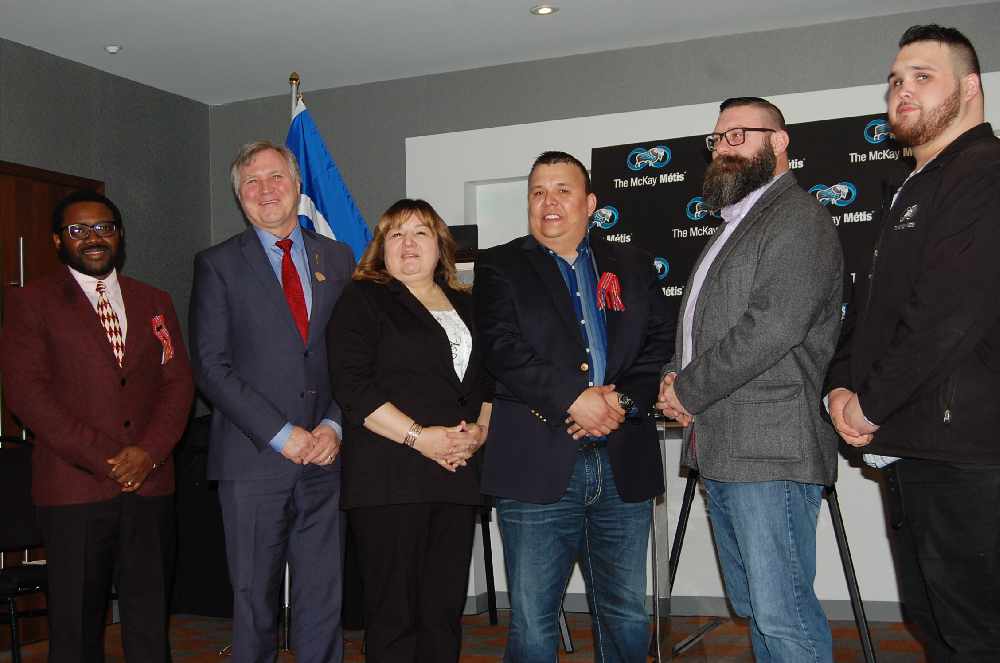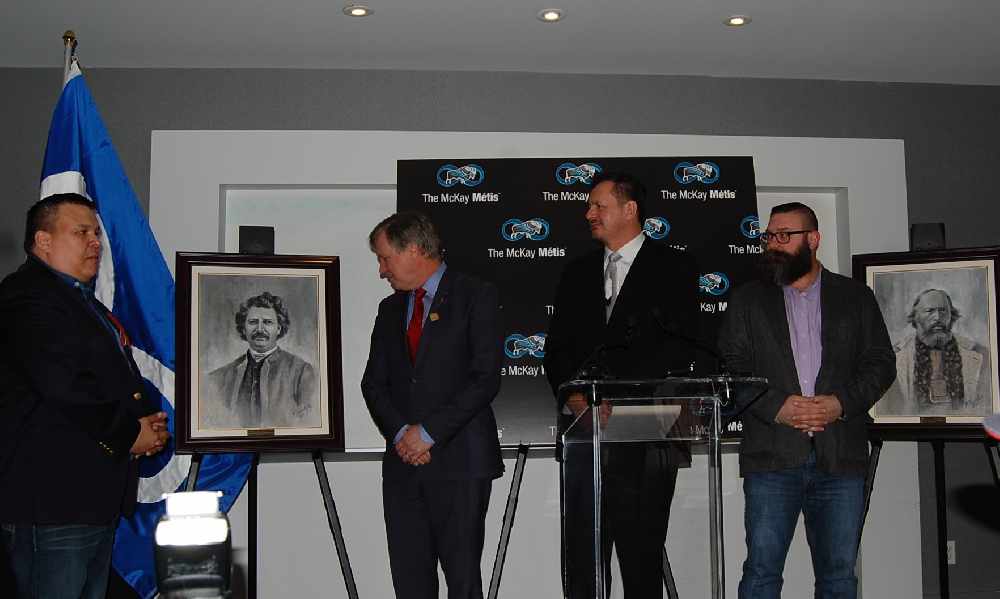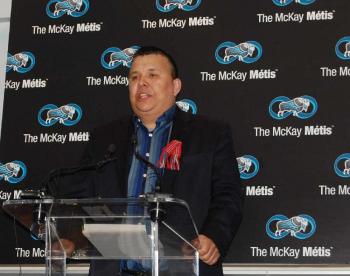Image Caption

Announcing the purchase of land by the Fort McKay Metis Community Association are (from left) Eddison Lee-Johnson, general director of Fort McKay Metis; Indigenous Relations Minister Richard Feehan; association board member Lauretta Waquan and president Ron Quintal; Municipal Affairs Minister Shaye Anderson; and the association’s youngest board member Felix Faichney. Photo by Shari Narine.
By Shari Narine
Windspeaker Contributor
EDMONTON
The Métis in the hamlet of Fort McKay will no longer be the have-nots.
Land previously held under a 50-year lease by the Fort McKay Metis Community Association has been purchased from the province for the market value of $1.6 million and is the first step towards delivering services, developing an economy, building homes on traditional Métis land, and bringing home their members, said association President Ron Quintal.
“Ownership means self-determination,” said Quintal at a press conference held in Edmonton this morning.
“We are the first Métis community to buy all this land for the purposes of developing it to enhance the quality of life for our members.”
Municipal Affairs Minister Shaye Anderson worked with the Fort McKay Métis to help complete the transfer.
“This step recognizes the intent and promotion of self-determination and our shared goal of autonomy,” said Anderson. “They’ve been on this land a long time and they deserve to have this right for their kids.”
Anderson said the province will continue to work with Fort McKay Métis as part of the hamlet of Fort McKay within the Rural Municipality of Wood Buffalo.
Quintal said the association will use revenue from the $30 million earned annually from the 10-community owned businesses that comprise the McKay Metis Group, along with money from impact benefit agreements signed with industry, which goes into a trust fund, to develop the 500 acres of land they now own.
He said they will also be talking to the province about accessing some of the $120 million set aside for off-reserve housing and are looking at recently announced federal dollars of $500 million over 10 years for a Métis housing strategy. He said money could also be borrowed from ATB Financial, which is partnering with the Fort McKay Métis on this venture.
Up to this point, said Quintal, no money has been received from the Métis Nation of Alberta and only the occasional grant from the province.
The McKay Métis have used their own revenue to fund Elder, youth, social and cultural programs, as well as built 14 community-owned homes.
While no money has been received from the federal government either, Quintal notes that going forward the implementation of the Daniels decision may see funding made available for Métis communities and Fort McKay Métis will access those dollars.
Quintal said, over the past year the community has been developing a master plan setting long-term goals. Ground has already been broken for a community pavilion.
“Anything that is going to be built in the community needs community buy-in,” said Quintal.
He said there is hope that, with community development and supports, all 97 Fort McKay Métis members will be able to come home. Right now 57 members live in the hamlet.
Quintal said the community also recently voted to open an “exploratory table to begin the process of self-government and developing a constitution for an opportunity to move forward in truly representing ourselves.”
He points out that for the past years, the community has been self-governing.
“We just want to formalize that. At the end of the day, we just want to be able to blaze a trail that other communities can move towards,” he said.
The Fort McKay Metis Community Association is not a part of the Metis Nation of Alberta.

Ron Quintal, president of the Fort McKay Metis Community Association, (left) and Dwayne Roth (second from right), CEO of McKay Metis Group, present Indigenous Relations Minister Richard Feehan with a drawing of Louis Riel and a drawing of Gabriel Dumont to Municipal Affairs Minister Shaye Anderson. Photo by Shari Narine.

